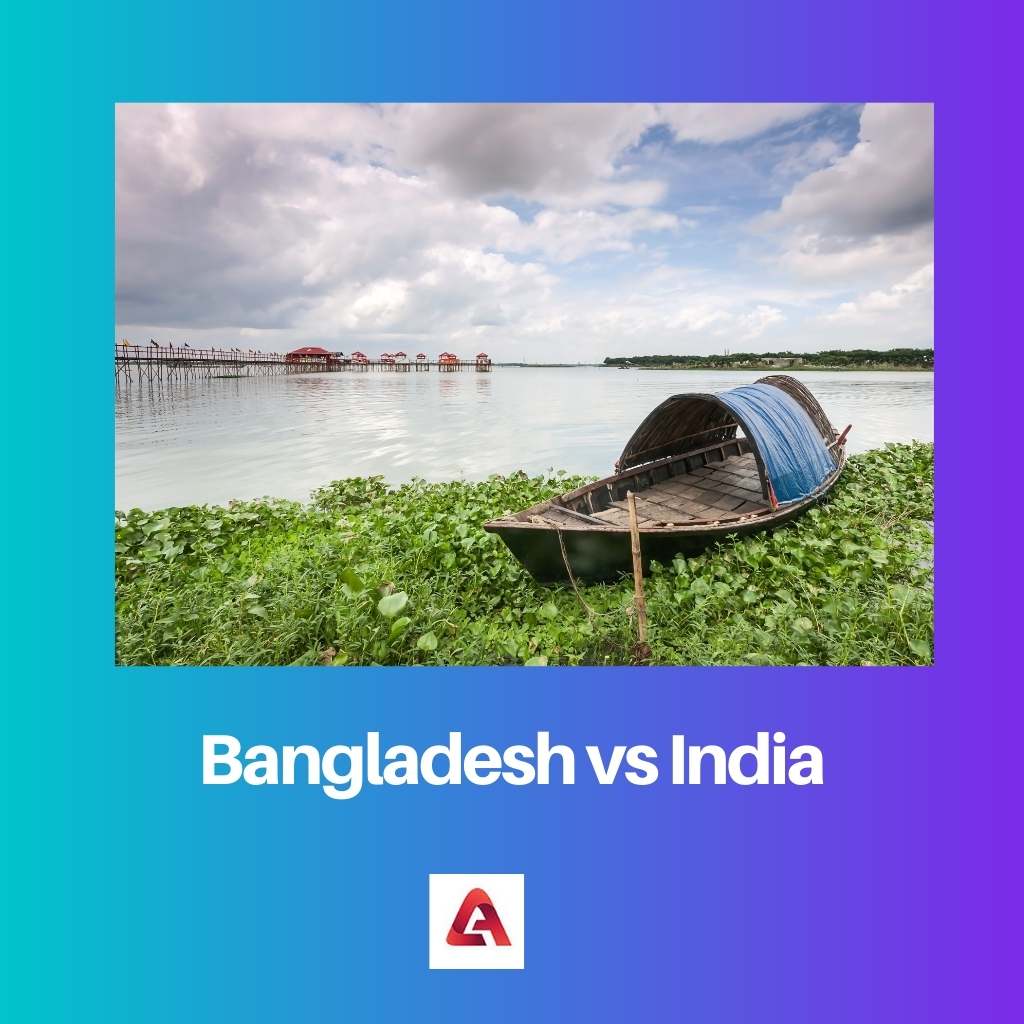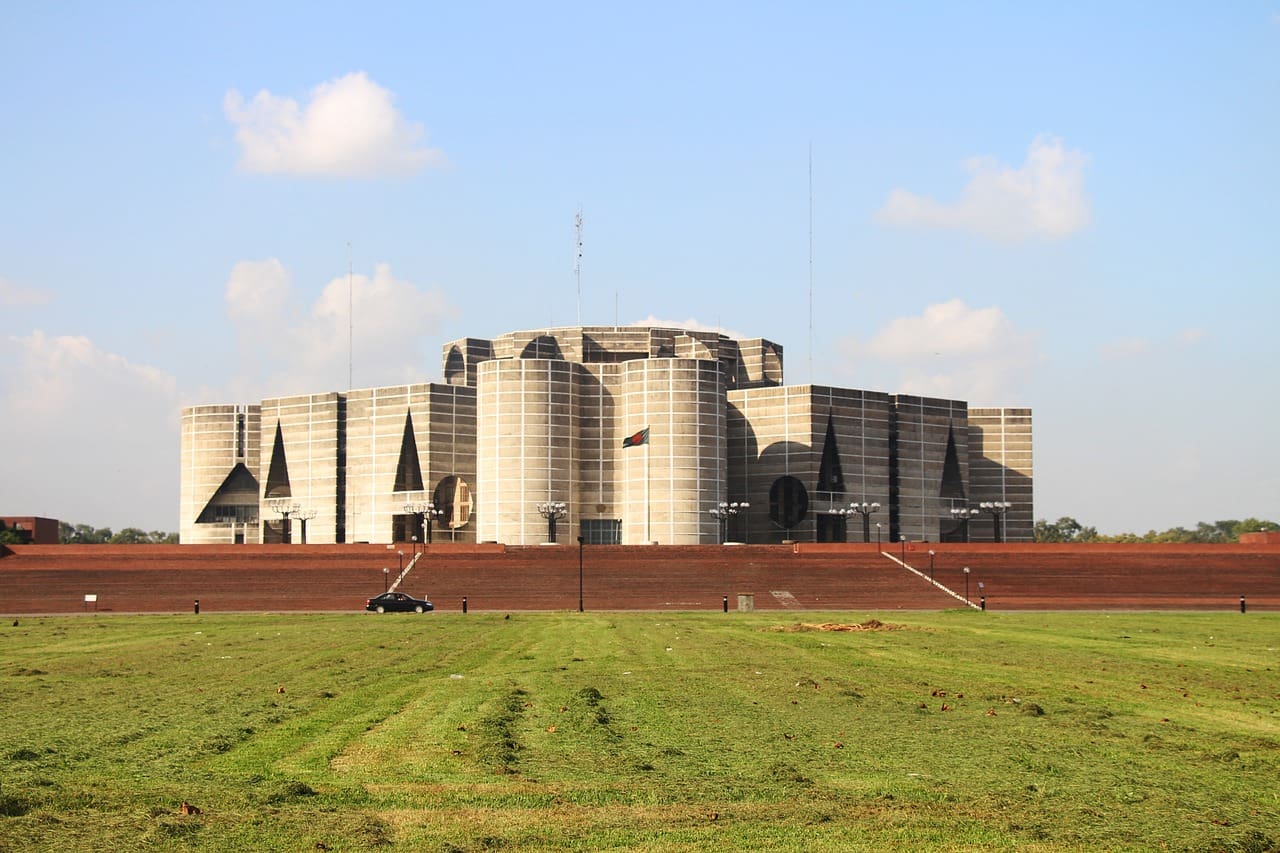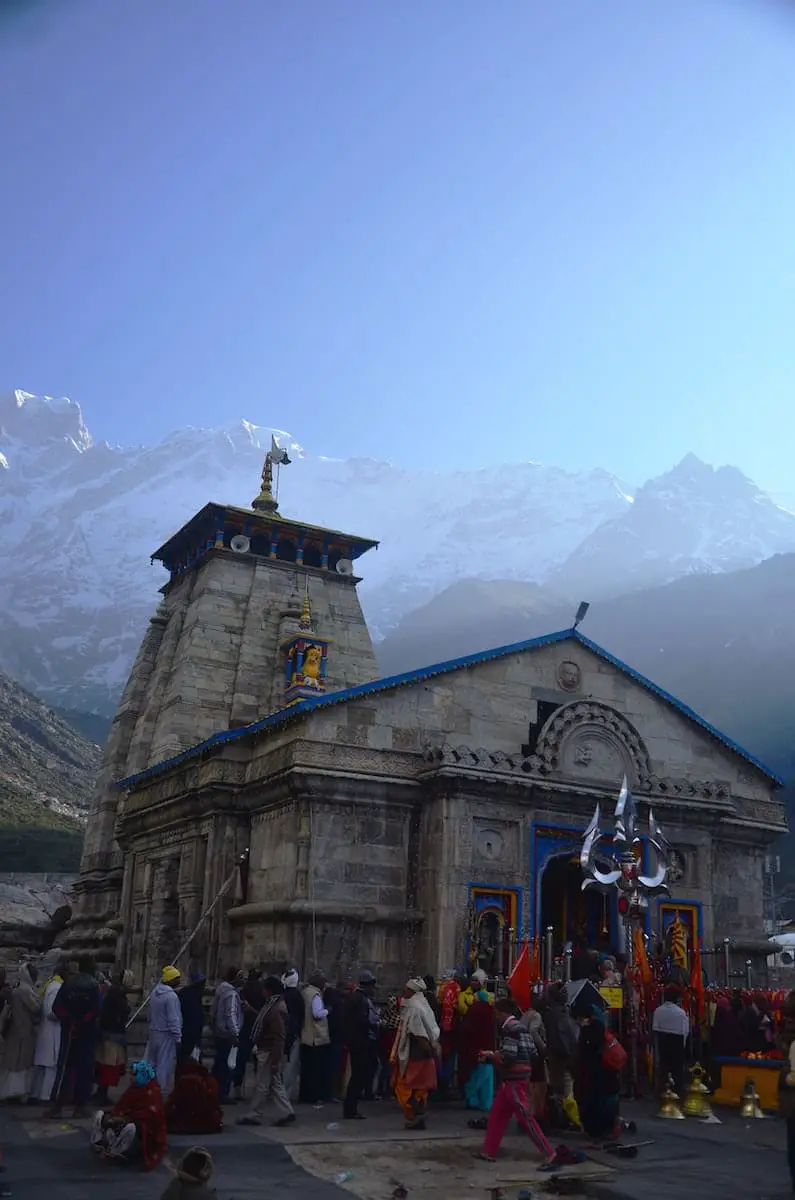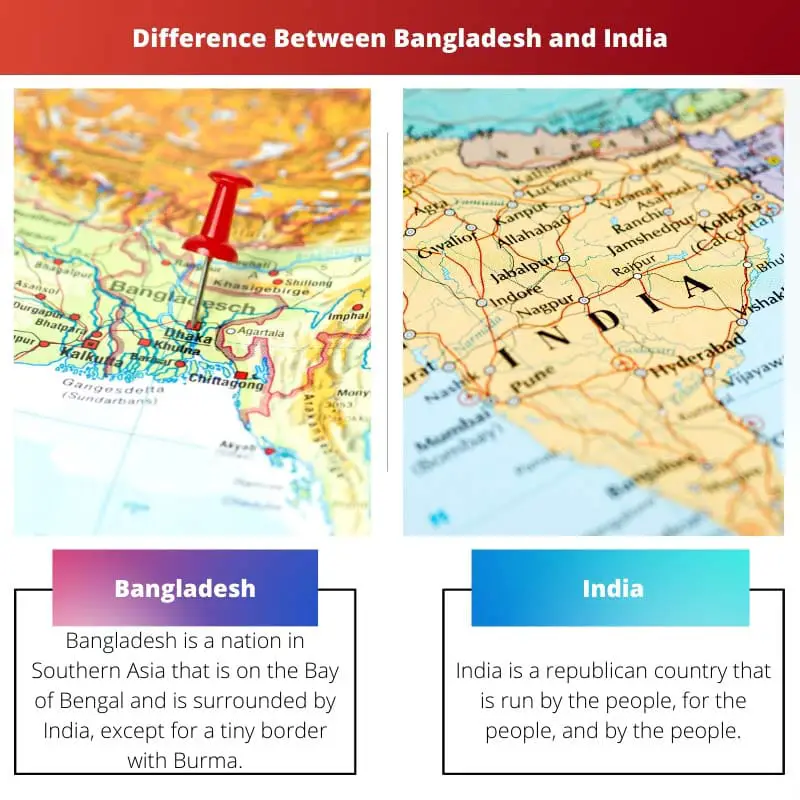Bangladesh and India are both South Asian countries with common cultural ties, including the usage of Bengali as a language in West Bengal, India, and Bangladesh.
Bangladesh is the world’s most densely inhabited non-island country. India is the world’s second-most populous country, behind China, with one-sixth of the global population.
India has many distinct factors from Bangladesh in terms of culture, rules, laws, currency, and many other aspects.
Key Takeaways
- Bangladesh is a smaller country in terms of land area and population compared to its neighbor, India, the seventh-largest country in the world and the second-most populous.
- India has a more diverse culture, with over 2,000 ethnic groups and 1,600 languages, while Bangladesh has a predominantly Bengali-speaking population and more cultural homogeneity.
- India’s economy is significantly larger, with a wide range of industries, including IT, manufacturing, and services, while Bangladesh relies heavily on textiles, agriculture, and remittances.
Bangladesh vs India
The difference between Bangladesh and India is the governing system followed in the countries. In Bangladesh, the unitary multiparty republic with a single legislative body exists for governance, whereas, in India, a multiparty federal republic with two legislative bodies exists for governance. Other significant differences include the language used in both countries. Bangladesh is a monolingual country in which only Bangla is spoken, whereas India is a multilingual country.

Bangladesh is a nation in Southern Asia on the Bay of Bengal and surrounded by India, except for a tiny border with Burma.
Bangladesh’s lowlands are flat, and most of the nation is built on the deltas of enormous rivers flowing down from the Himalayas.
Bangladesh has a traditional economic system in which resources are allocated via rudimentary techniques and heredity.
India is a republican country that is run by the people, for the people, and by the people. People manage their county, elect their leader, and are self-sufficient in every way.
India is a country where people’s appearances alter depending on where they live. Each state, as well as the entire country, possesses amazing heritage beauty.
Each state has its unique religious history.
Comparison Table
| Parameters of Comparison | Bangladesh | India |
|---|---|---|
| Governance | Unitary multiparty republic with a single legislative body. | Multiparty federal republic with two legislative bodies. |
| Religious group | Muslim | Hindu |
| Form of government | Eight-division parliamentary republic. | 29-state federal parliamentary republic with seven union territories. |
| Currency | Bangladesh Taka | The Indian Rupee |
| Official name | Gana Prajatantri Bangladesh | Bharat Ganarajya |
What is Bangladesh?
The People’s Republic of Bangladesh, also known as “Gana Prajatantri Bangladesh,” is the world’s most densely inhabited non-island nation.
Bangladesh is a young country that gained independence from West Pakistan on December 16, 1971. Bangladesh is the capital city, and Bengali or Bangla is the official language.
It has a border with Myanmar in the southeast (Burma). Bangladesh’s southern tip juts into the Bay of Bengal. Bangladesh’s Bengali people make up the great majority of the country’s population.
Bengali is a word that refers to both an ethnic and linguistic group. The Bengali people have a complex history, having arisen from the confluence of many communities that migrated to the region over many years.
Almost the whole population of Bangladesh speaks Bengali as their first language. Indigenous minority populations, on the other hand, speak their languages and dialects, some of which are Tibeto-Burman.
In metropolitan areas and among educated groups, English, an Indo-European language, is spoken.
Bangladesh’s economy has remained predominantly agrarian, with agriculture employing about half of the population in the early twenty-first century.
Rice is the most significant agricultural commodity, although jute and tea, both substantial foreign exchange earners, are also important.
Bangladesh’s Bengali language, Islamic faith, and rural nature all help to unite the country’s culture to a large extent.
Although there is some geographical variation within the Bengali community, cultural distinctions exist across ethnic, religious, and socioeconomic minorities and between rural and urban communities.

What is India?
The Republic of India is the world’s second-most populous country, behind China, with one-sixth of the global population. It covers 3,166,391 square kilometres and has a population of 1.3 billion people.
India was a vast country liberated from British rule on August 15, 1947.
The present governmental structure is a multiparty federal republic with two legislative bodies, the Council of States and the House of People. New Delhi is the capital, and Hindi and English are the official languages.
Invasions from beyond India’s northern mountain border have sporadically disrupted the country’s history.
As usual, the hottest months in India are May and June, shortly before the southwest monsoon’s cooling rains arrive. When precipitation begins to diminish in September or October, a secondary maximum occurs.
The temperature range is much narrower near the coastal plains than it is in the interior. With increasing latitude, the range tends to expand as well.
The seasonal range near India’s southernmost point is only a few degrees. India is a multicultural country with hundreds of ethnic and tribal groupings.
A long and extensive process of migration and marrying resulted in this level of intricacy. There are likely hundreds of major and minor languages and many hundreds of recognized dialects in India.

Main Differences Between Bangladesh and India
- A unitary multiparty republic governs Bangladesh with a single legislative body, known as the parliament, whereas a multiparty federal republic governs India with two legislative bodies.
- The majority of people in Bangladesh are of Muslim religious groups, whereas the majority of people residing in India belong to the Hindu religious group.
- Bangladesh is an eight-division parliamentary republic, whereas India is a 29-state federal parliamentary republic with seven union territories.
- Bangladesh’s monetary unit is the Bangladesh Taka (BDT), which is equivalent to 0.012 US dollars (USD). The Indian Rupee (INR) is India’s currency, and 1 INR is equal to 0.014 USD.
- Locals refer to the People’s Republic of Bangladesh as “Gana Prajatantri Bangladesh,” whereas the Republic of India is referred to as “Bharat Ganarajya”.

- https://www.sciencedirect.com/science/article/abs/pii/S0305750X00001212
- https://core.ac.uk/download/pdf/268591293.pdf

The article seems to only scratch the surface of the complex differences between Bangladesh and India. There’s so much more to delve into, and this doesn’t dig deep enough into topics like economic structures and political history compared to the neighboring country.
The article seems to assert that India is more diverse than Bangladesh, which can be argued from different points of view. It’s a thought-provoking perspective, but more counterpoints could be included to provide an even more comprehensive understanding.
The comparison table is a very effective way to depict the varying parameters between Bangladesh and India. It succinctly presents the essential differences, making it easier for readers to grasp the contrasts between the two nations.
The comprehensive overview provided gives a clear understanding of the differences between the two countries, highlighting aspects that go beyond the commonly known information. Impressive!
The article is an informative piece that illustrates the vast cultural diversity and historical relevance of both Bangladesh and India. It gives readers a solid foundation for understanding these South Asian nations.
The article provides a comprehensive comparison between Bangladesh and India, highlighting their differences in culture, governance, and economic characteristics, which makes it a great source of information.
Indeed, we can appreciate the relevance of including a historical context of both countries. It shows the author’s credibility and adds value to the article.